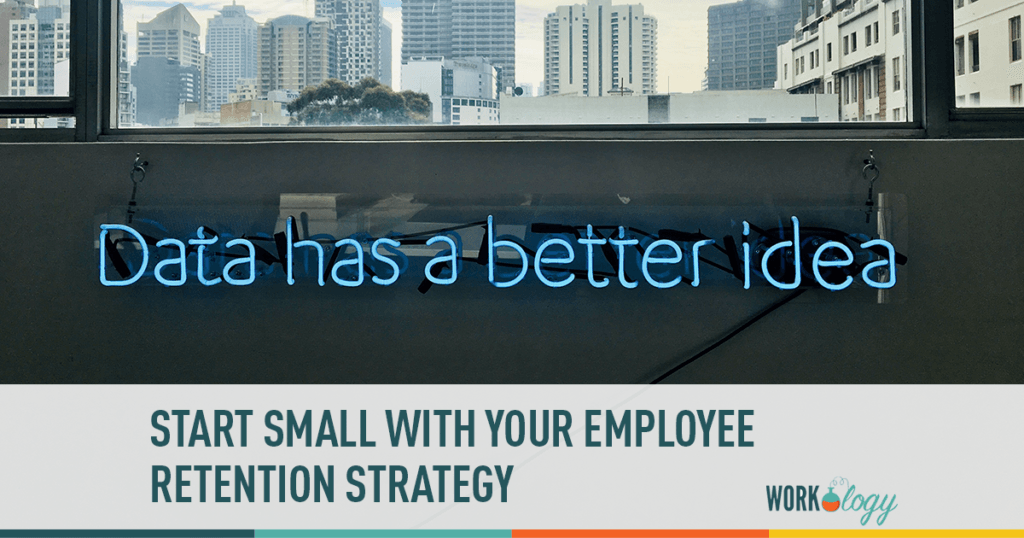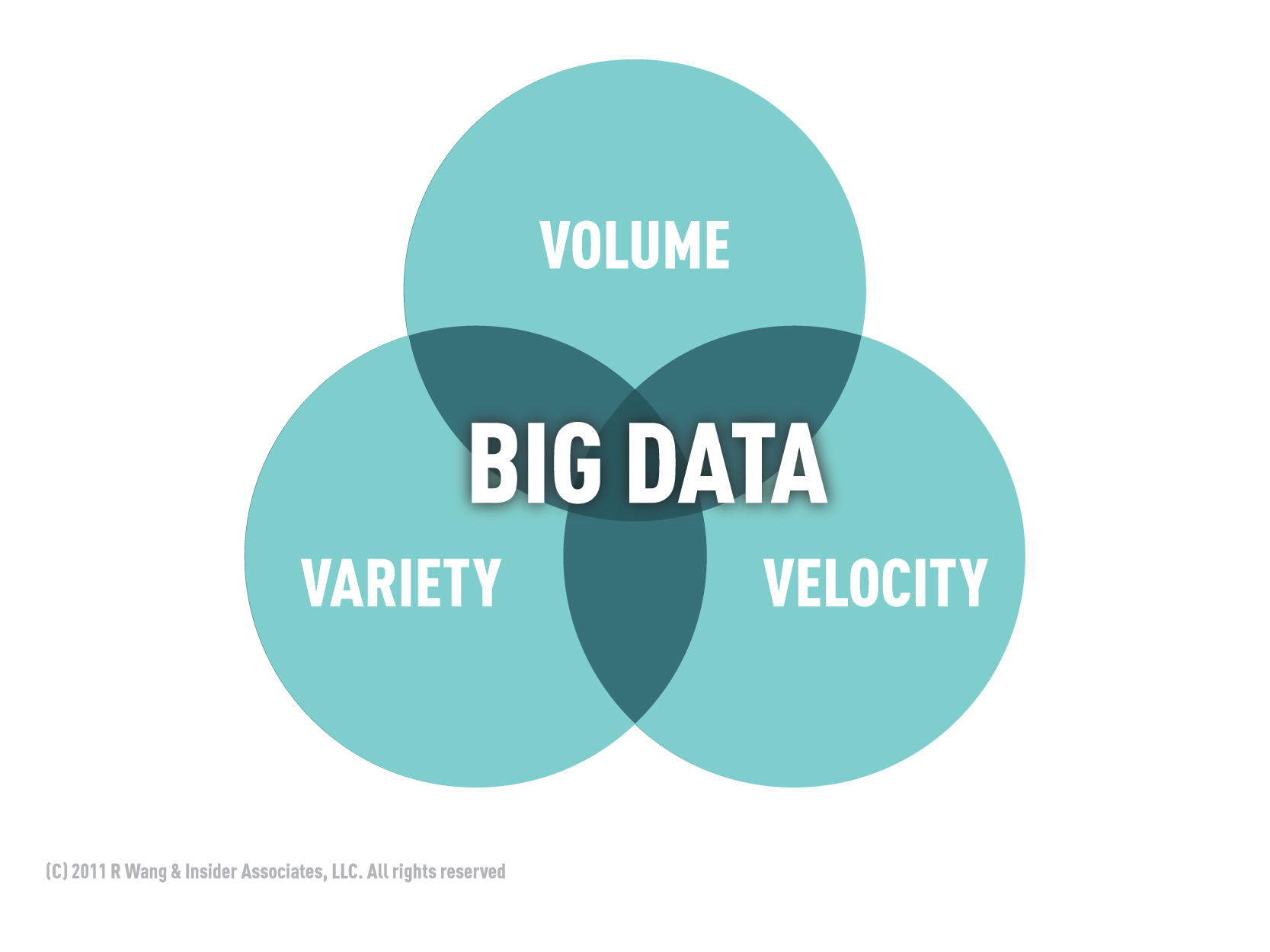If there is one thing I know for sure, it’s that data changes lives. It helps us decide on the neighborhood or home we want to purchase. It guides us in our decision when selecting a new and trendy restaurant in which to enjoy during our work trip or vacation travels. This weekend, data has provided me with a foundation to move forward building a stone patio in our backyard. Without it, I wouldn’t be attempting and investing the time in our DIY.
Big data is when Pinterest anticipates and suggest new pins for me based on my past favorites, repins or preferences. It’s when your company’s training system suggests new e-learning courses you should consider or when you see your ex-boyfriend’s face as a “suggested friend or connection” via a certain social network. Big data and some pretty creepy machine learning algorithms are at play.
Data doesn’t impact our personal lives making my first stone patio attempt possible. It also can transform our recruitment and hiring process shedding light onto processes bottlenecks and different interpretations of data we might have not considered due to the simple fact that we are too invested in the process to truly analyze our recruiting strategies.
HR Metrics or Big Data
Leveraging data not just HR Metrics in human resources allows you to:
- Establish patterns. Find invisible patterns. Maybe every person you hire you’ve hired from a competitor results in turnover of less than 90 days. Maybe the data tells you that new hires who lives within a 20 mile radius respond to customer requests with a 50% faster response rate.
- Predict the unpredictable. As practitioners we are in the weeds of the work often unable to see the forest through the trees. Data analysis allows us to help predict and improve turnover numbers, retention rates, cost per hire, quality of hire and other HR Metrics in a way that we might not be seeing.
- Decrease uncertainty. Uncertainty kills business. Uncertainty combined with a fundamental understanding of how HR and recruiting impact an organization are what has driven the recent cover story by Harvard Business Review suggesting we “blow up HR.” These myths need to be busted and that starts with talking the language of our business leaders, being assertive and creative in how we approach the challenges of hiring and recruiting.
Big data is just like that looming pile of mail that you know you have to sort through but avoid at all costs. It’s like organizing my master bedroom closet. Yes, big data is that giant mess than is a master bedroom closet. That closet is a disaster and a mess so much so that I don’t know where to start. I’ve overwhelmed and angry at myself for letting it get that way. There just aren’t enough hours in the day. I also know that once I get invested in organizing and making sense of my closet that I won’t stop. And I’ll be more organized and productive because of it. It’s just that getting there is so involved and time consuming.
Big data is big business. Business leaders are investing a great deal of money, time and effort into predictive data and analytics when it comes to customer insights, improving manufacturing process and research so why not the CEO’s biggest concern at their company. Big data is perfect for analyzing and improving the hiring and recruitment process at your company.
Why HR Metrics Aren’t Really Big Data
Technically, HR and recruitment data isn’t really “big data.” As first discussed by Gartner researcher Doug Laney in 2001, what makes big data big data is historically three things: 1) velocity, 2) variety and 3) volume. Otherwise, it is just a spreadsheet.
Velocity
There should be high volumes of data that move quickly. However, the business use case for big data in HR is not always about hiring. Sometimes the use case is about productivity, fairness and time management efficiencies. For instance, In 2009, retailer Puma successfully began using a retail scheduling and employee forecaster tool that allowed for increased automation and streamlining of employee work schedules, workplace transparency and hours assigned to the retail locations based on sales forecasts.
Variety
Data variety means that the data points you collect and analyze come from multiple – often hundreds or thousands – of sources. This is in stark contrast to my simple HR spreadsheet where I input my turnover data, had it calculated using an Excel formula and then saw it displayed in cell C12. As discussed earlier, data comes from multiple places, and these sources are hard for a single person or teams of individuals to wrap their heads around. In the Puma example I used, their data is likely pulled from the store’s past 12 weeks of sales and customer data, as well as that same data from nearby stores, to allow cashiers, sales professionals, managers and back room staff to be scheduled when customers are most likely to be visiting stores.
Volume
The volume of your data really speaks to processing. Chances are you have data available on countless candidates over the last five years who have applied for a position with your company. Add that to the number of employee actions, like pay increases, demotions, terminations and transfers that have been processed within your HRIS, and you’ve got quite a bit of data to work with. Is there a correlation to all that data in relation to non-HR data points and information? Can you better forecast your hiring and staffing needs by utilizing it? What about using past sales data and numbers to develop a predictive analytics tool that can alert you to potential gaps in your candidate pipelines?
Whether it’s big data, small data or data data doesn’t make a difference to me. HR and recruitment teams can take advantage of the data you already have on hand could allow you to truly move beyond reactive recruiting and into proactively building relationships and sourcing candidates weeks or months before the position is actually being hired for. You could cut down on recruiting expenses, lost productivity, employee stress and sales losses due to job openings. This is what big data can do for HR and recruiting.
Big data is on my mind this week as I prepare for my presentation for the Missouri SHRM Conference. Those looking for the slides from my presentation can access them below:










